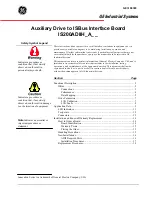
SIC63616-(Rev. 1.0) NO. P175
3240-0412
(4) The S1C63616 supports the SLEEP function and both the OSC1 and OSC3 oscillation circuits stop oscil-
lating when the CPU enters SLEEP mode. To prevent the CPU from a malfunction when it resumes
operating from SLEEP mode, switch the CPU clock to OSC1 before placing the CPU into SLEEP mode.
I/O port
(1) When an I/O ports in input mode is changed from high to low by the pull-down resistor, the fall of the
waveform is delayed on account of the time constant of the pull-down resistor and input gate capaci-
tance. Hence, when fetching input data, set an appropriate wait time.
Particular care needs to be taken of the key scan during key matrix configuration.
Make this waiting time the amount of time or more calculated by the following expression.
10 × C × R
C: terminal capacitance 15 pF + parasitic capacitance ? pF
R: pull-down resistance 500 k
Ω
(Max.)
(2) Be sure to turn the noise rejector off before executing the SLP instruction.
(3) Reactivating from SLEEP status can only be done by generation of a key input interrupt factor. There-
fore when using the SLEEP function, it is necessary to set the interrupt select register (SIPxx = "1") of the
port to be used for releasing SLEEP status before executing the SLP instruction. Furthermore, enable the
key input interrupt using the corresponding interrupt mask register (EIKxx = "1") before executing the
SLP instruction to run key input interrupt handler routine after SLEEP status is released.
(4) A hazard may occur when the TOUT_A and FOUT signals are turned on and off.
(5) When f
OSC3
is selected for the FOUT signal frequency, it is necessary to control the OSC3 oscillation
circuit before output. Refer to Section 4.4, "Oscillation Circuit", for the control and notes.
(6) Before the port function is configured, the circuit that uses the port (e.g. input interrupt, multiple key
entry reset, serial interface, event counter input, direct RUN/LAP input for stopwatch) must be dis-
abled.
LCD driver
(1) When a program that access no memory implemented area (F070H–F0FFH, F170H–F1FFH, F270H–
F2FFH, F370H–F3FFH) is made, the operation is not guaranteed.
(2) When driving the LCD system voltage regulator with V
D2
, wait at least 1 msec for stabilization of the
voltage before switching the power voltage for the LCD system voltage regulator to V
D2
using VCSEL
after the power supply voltage booster/halver is turned on.
Clock timer
(1) Be sure to read timer data in the order of low-order data (TM0–TM3) then high-order data (TM4–TM7).
(2) The clock timer count clock does not synch with the CPU clock. Therefore, the correct value may not
be obtained depending on the count data read and count-up timings. To avoid this problem, the clock
timer count data should be read by one of the procedures shown below.
• Read the count data twice and verify if there is any difference between them.
• Temporarily stop the clock timer when the counter data is read to obtain proper data.
Stopwatch timer
(1) The interrupt factor flag should be reset after resetting the stopwatch timer.
(2) Be sure to data reading in the order of SWD0–3
→
SWD4–7
→
SWD8–11.
(3) When data that is held by a LAP input is read, read the capture buffer renewal flag CRNWF after read-
ing the SWD8–11 and check whether the data has been renewed or not.
(4) When performing a processing such as a LAP input preceding with 1 Hz interrupt processing, read the
LAP data carry-up request flag LCURF before processing and check whether carry-up is needed or not.
Содержание S1C63616
Страница 1: ...S1C63616 Technical Manual Rev 1 0 ...















































